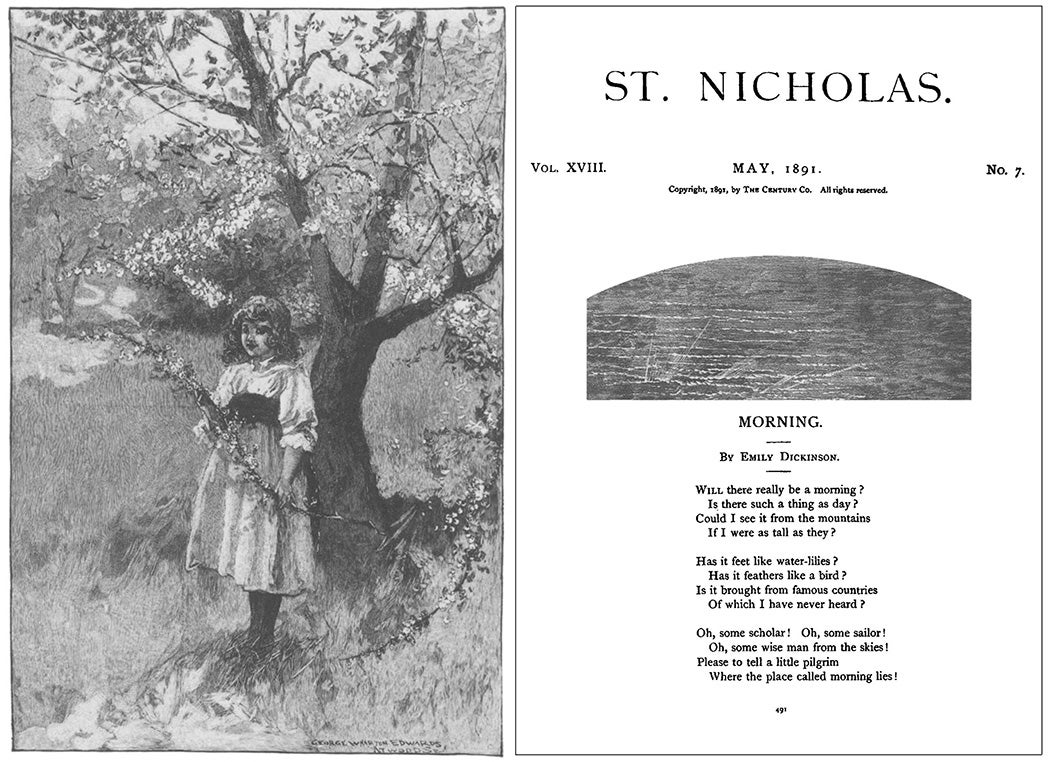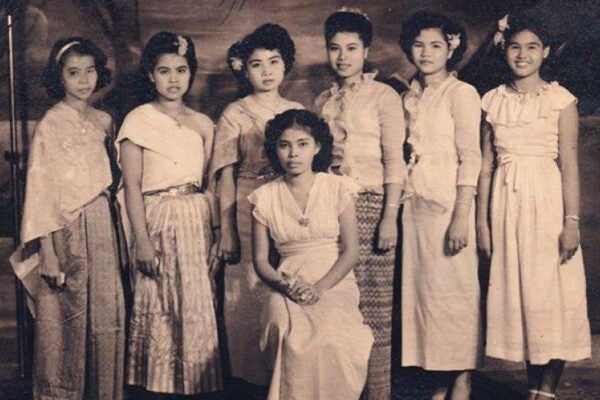During the 1890s, readers of one of the United States’ most popular children’s magazine could read sentimental stories, riddles, and articles by and for kids. But they may also have encountered verses by a poet many contemporary readers think of as writing strictly for adults: Emily Dickinson. The poems appeared as part of a short-lived, ill-fated attempt to get the country to think of Dickinson as a children’s author—what scholar Ingrid Satelmejer calls “a marketing ploy gone awry.” But was it a bad idea to try to pitch Dickinson as a poet for kids? Not necessarily, Satelmejer writes.
After Dickinson’s death, her sister recruited Thomas Wentworth Higginson, with whom Emily had corresponded extensively, and Mabel Loomis Todd, an Amherst woman who happened to be the mistress of the one Dickinson brother. Though Dickinson was reticent to publish her own work during her lifetime, Todd and Higginson wanted the public to know her poems.

To do so, they knew they’d need to take advantage of periodicals. Higginson knew how important they were to a poet’s reputation—he had published extensively, knew who was who, and had used magazines to build his own career. Todd, too, had published in periodicals, and “both editors called on their experience in navigating the nation’s periodical web” as they tried to introduce the public to Dickinson’s poems.

That’s how Dickinson’s name ended up in St. Nicholas Magazine, one of the era’s most important periodicals for children. The magazine went to great lengths to make its poetry as palatable, attractive, and important as possible to young readers. Edited by Mary Mapes Dodge, it was a prestige publication that showcased authors like Louisa May Alcott, Mark Twain, Henry Wadsworth Longfellow, and Frances Hodgson Burnett. “To appear in the magazine was to have arrived—and arrived in the best clothes and with the best company possible en route to the privileged households of America and the world,” writes Satelmejer.
Nor was the idea of Dickinson as “children’s friend” all that strange. Todd had made much of the author’s willingness to engage with children despite her seemingly reclusive ways. Her verses “Morning” and “The Sleeping Flowers,” as Todd named them, were lullaby-like. They were also altered by Todd, who changed them “in order to have the rhyme perfect.”
Get Our Newsletter
Todd and Higginson seem to have wanted to publish a volume of Dickinson’s poetry for children, and the careful framing of each poem within the magazine, complete with illustrations and beautifully stylized drop caps, makes it easy to imagine such a book. Dickinson poems also appeared in the “Youth’s Companion,” the era’s most popular publication for children. But a book for kids never followed.
According to Satelmejer, ninenteenth-century periodicals existed in tension with books, serving as locations where books could be challenged, circumvented, or plotted. And though Todd’s short-lived plan to turn Dickinson into a children’s poet failed, this attempt to use the poems to seed a public interest in Dickinson may have actually worked. By including her work in a prestige publication, Todd was able to set Dickinson in a context of exclusivity and legitimacy, shepherding the author into a lasting position of importance within the literary world.
Though the poems “dare us not to take them seriously,” writes Satelmejer, we underestimate them—and the careful attempts it took to bring Dickinson to the forefront of American readers’ minds—at our peril.







